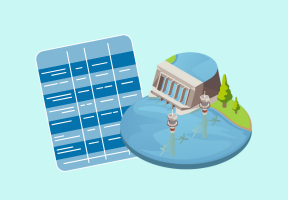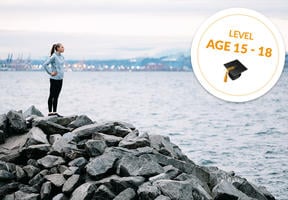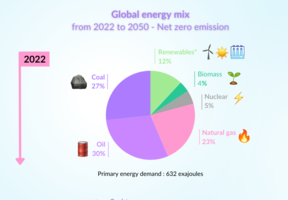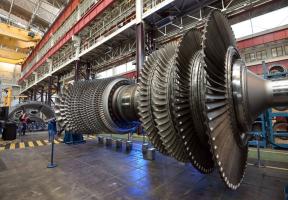Hydropower, the Leading Renewable Energy
10 min read
encompasses both plants installed on land — on rivers and lakes — and ocean energy, which is still being developed and harnesses the force of waves, tides and currents. Widely used for decades, hydropower plants are the world’s leading source, producing 83% of renewable .

© P. POCHARD / AFP - The dam at the Rizzanese hydropower plant near Sainte-Lucie-de-Tallano in Corsica.
The generated by moving water has been used by humankind for centuries, to drive watermills that produce . Modern hydropower, sometimes referred to as “white ," is harnessed in plants where is generated. Around 40 countries use hydropower to produce more than a fifth of their electricity1. Hydropower accounts for 16% of electricity worldwide, behind coal and gas, but ahead of nuclear.
From Dams to Plants
A hydroelectric power plant has three main components:
- A dam that creates a large waterfall and stores enough water to supply the plant at all times. As well producing and storing energy, a dam also helps to regulate flooding.
- A penstock that channels water from its natural environment (river or lake) to supply the dam reservoir. It may be an open channel, a tunnel or pipeline.
- A powerhouse that houses the turbines driven by the waterfall and the generator driven by the turbines.
Types of Hydropower Plant
The type of plant varies with the site's configuration, the waterway and the intended use.
- Run-of-river plants produce energy using the flow of the river. With dams less than 25 meters high, these “small hydro” plants generate power continuously to meet daily needs.
- Off-stream plants are modular, meaning that energy can be produced on demand, with dams used to create reservoirs that can be released as required. On lakes, water falls from a significant height (over 300 meters); on locks, from between 20 and 300 meters.
- Pumped storage power plants are specifically designed for modular operation. They have two reservoirs at different heights. When demand requires, water is released from the higher reservoir to the lower reservoir. When there is excess production — for example, from wind or solar sources — the surplus electricity is used to pump water into the higher reservoir.
Site Selection and Financing
First, the right topographical, geological and hydrographical conditions are required. The biggest hydropower producers are countries crossed by fast-flowing rivers and mountainous countries. Gorges in rivers are good places for building dams. Similarly, a large flat valley is ideal for holding water. There must be sufficient rainfall in the catchment area (all upstream water).
Large and medium-size dams are very expensive to build. Governments are increasingly trying to obtain funding from private sources or large international organizations such as the World Bank for these projects. But because the payback period is seen as too long, hydropower projects have difficulty attracting investors. The future of hydropower therefore depends to a large extent on the persuasiveness of states and potential public-private partnerships.
The Advantages of Hydropower
The water used to generate hydropower is renewable and storable, meaning it can be used at peak consumption times and then reused. This way of storing is particularly efficient as a hydro plant can reach its maximum rated capacity in just a few minutes. By way of comparison, a thermal energy plant takes around 10 hours to reach full capacity and a takes four times longer than that.
Hydropower is extremely efficient, with 90% of the water’s energy converted into electricity. In addition, hydropower plants do not generate greenhouse gases, other emissions or waste.
While construction is a capital intensive, operating and maintenance costs are low. Plants have an extremely long life and the technology is highly reliable. In France alone, of the 60-odd large dams still in use, many were built before 1960. The oldest, located in the Nièvre region, began operating in 1858.
With all these advantages, developing hydropower can only be beneficial. However, it still presents difficulties (see Close-Up: "Barriers to Hydropower").
Source:

















